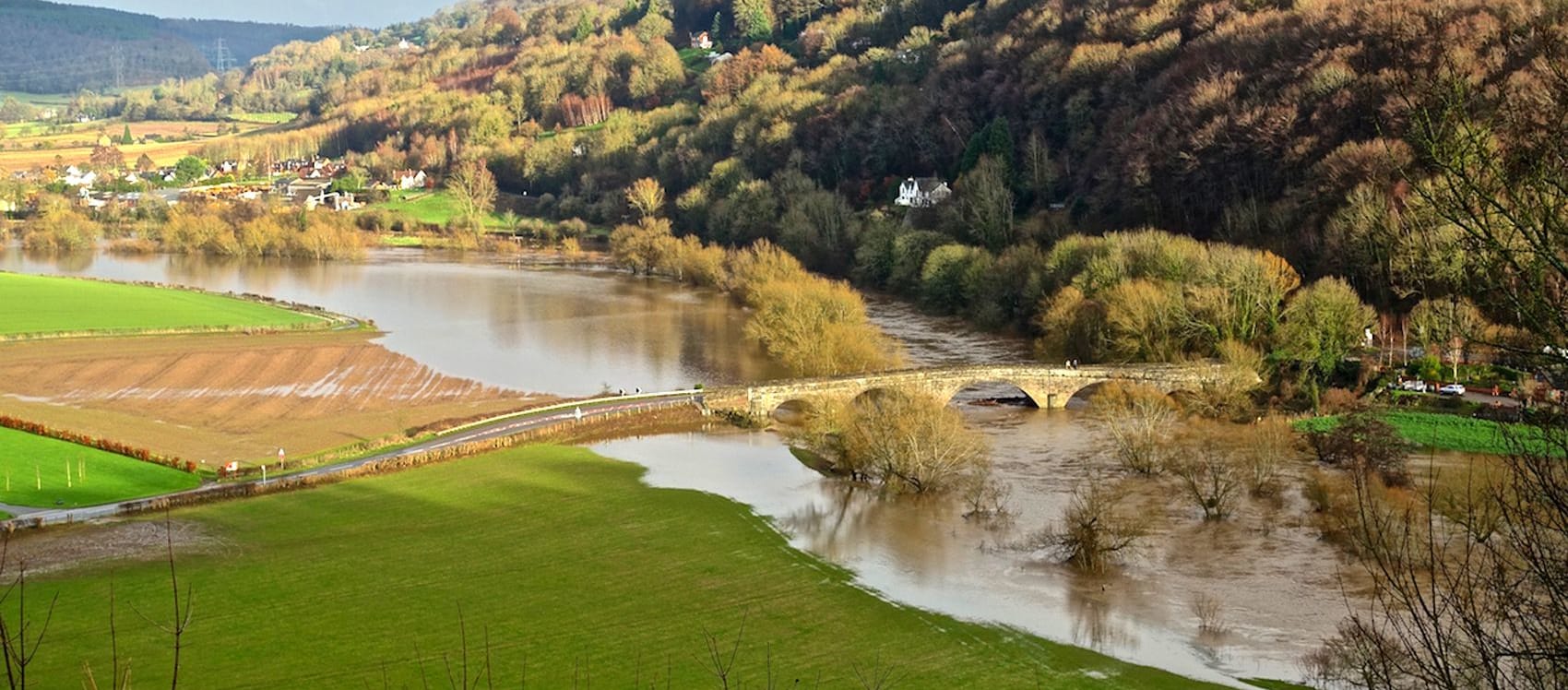Concrete barriers and other “hard” defences protecting homes from flood water are an increasingly common sight in our towns and cities. Such schemes give inhabitants of urban flood zones protection and a sense of reassurance.
However, they cost millions of pounds to build, are never 100% guaranteed to work for every flood event and will become less effective as our climate changes. Protecting one location can also move the problem onto somewhere else, often the next house, village or town downstream. Finally, there will always be areas of a river catchment where hard defences are deemed too costly to build or improve.
There are other, more natural ways of reducing flood risk. These are based around how land in the upper areas of a catchment is managed.
Natural Flood Management (NFM)
To reduce flood risk downstream, NFM makes use of land management to store water in soils and on the surface and slow down the flow from upland areas. Our work shows that NFM can also be effective in a wide range of landscapes.
Using the right combination of measures in the right places can help to slow flood peaks and reduce the depth and duration of flooding. The techniques our Catchment Advisors use include:
- Identifying high risk areas where both overland and sub-surface flows are increased as a result of degraded soils and poor land management.
- Supporting improvements to soil structure and the rebuilding of organic matter levels.
- Modifying flood banks to improve channel diversity, water holding capacity and/or re-connecting rivers with their floodplains.
- Introducing leaky woody debris dams to slow the flow and create in-channel habitat. Such debris dams are designed to maintain fish migration.
- Introducing wetlands, ponds and scrapes as features in the floodplain to provide increased water storage.
In addition to reduced flood risk, this work also….
- Reduces soil erosion and sedimentation loss to streams and rivers
- Increases carbon capture and storage
- Improves water quality
- Re-connects rivers with species-rich floodplain wetlands
- Enhances recreation opportunities and
- Creates new habitat to help restore biological diversity.
The Foundation is piloting these techniques in various parts of the Lugg, Frome, Monnow catchments, as well as the small tributaries of the main stem of the Wye.
Meanwhile, in Wales and in partnership with the Severn Rivers Trust, we have bid successfully for NFM funds from Welsh Government’s Sustainable Management Scheme. Our Wye Ithon Severn Ecosystems (WISE) project started in August 2019.
The Foundation will establish the evidence required for flood defence funds to be spent on solutions that are more cost effective and have a wider benefit in the catchment. We believe this is a far better option than building ever higher walls.
Latest news on our NFM work
10th March, 2021 – Is This Inevitable? Presentation given by Simon Evans, our Chief Executive.
19th February, 2020 – Do These Floods Have To Be So Devastating?
31st January, 2019 – Natural Flood Management.
Current NFM projects and case studies
Wye Ithon Severn Ecosystems (WISE) project
The River Wye and Lugg Natural Flood Management Project (Herefordshire County Council site)
Natural Flood Management project documents (Herefordshire County Council site)
Further NFM reading
Natural Flood Management Measures – a practical guide for farmers. Yorkshire Dales National Park Authority, August 2017



